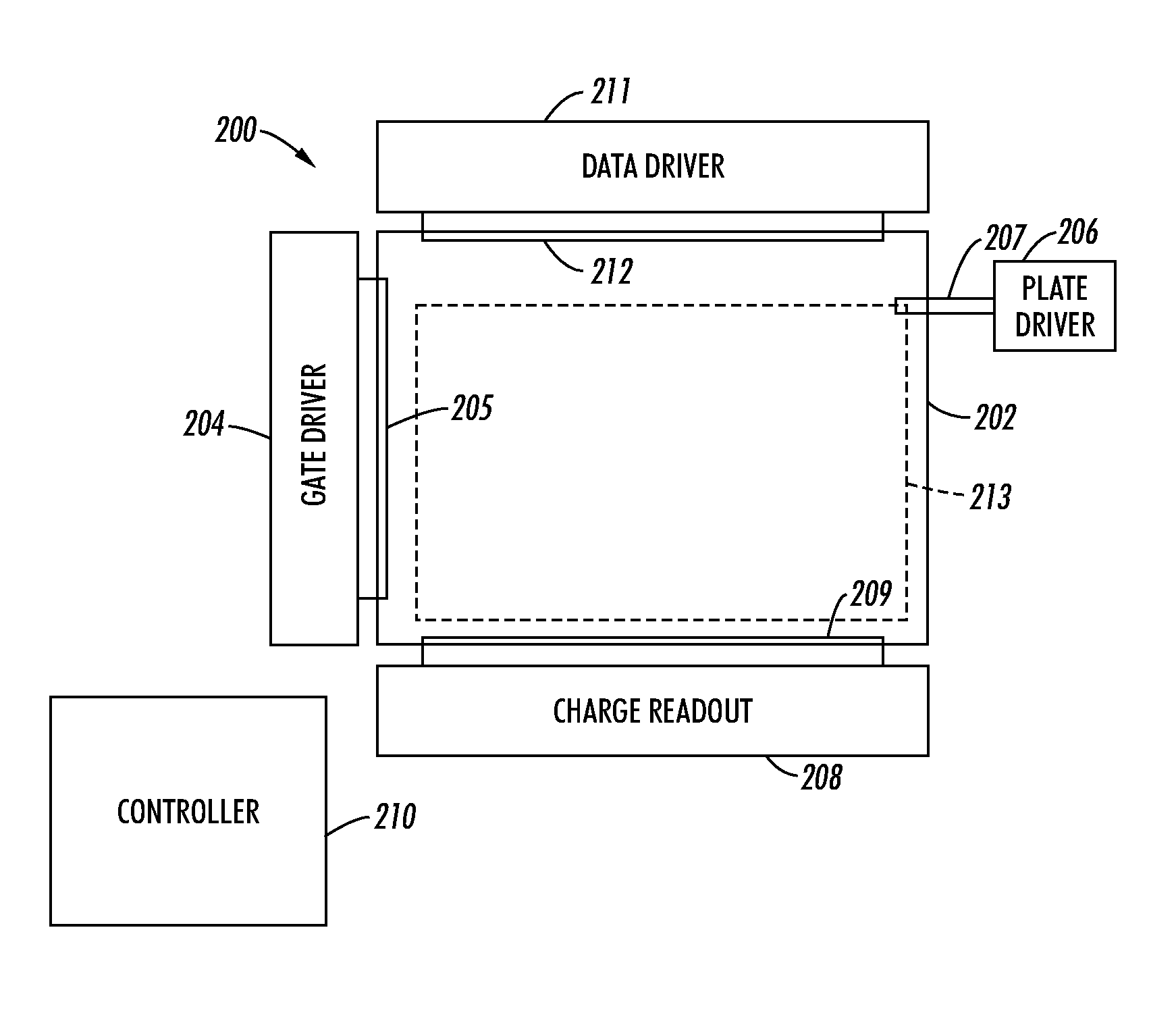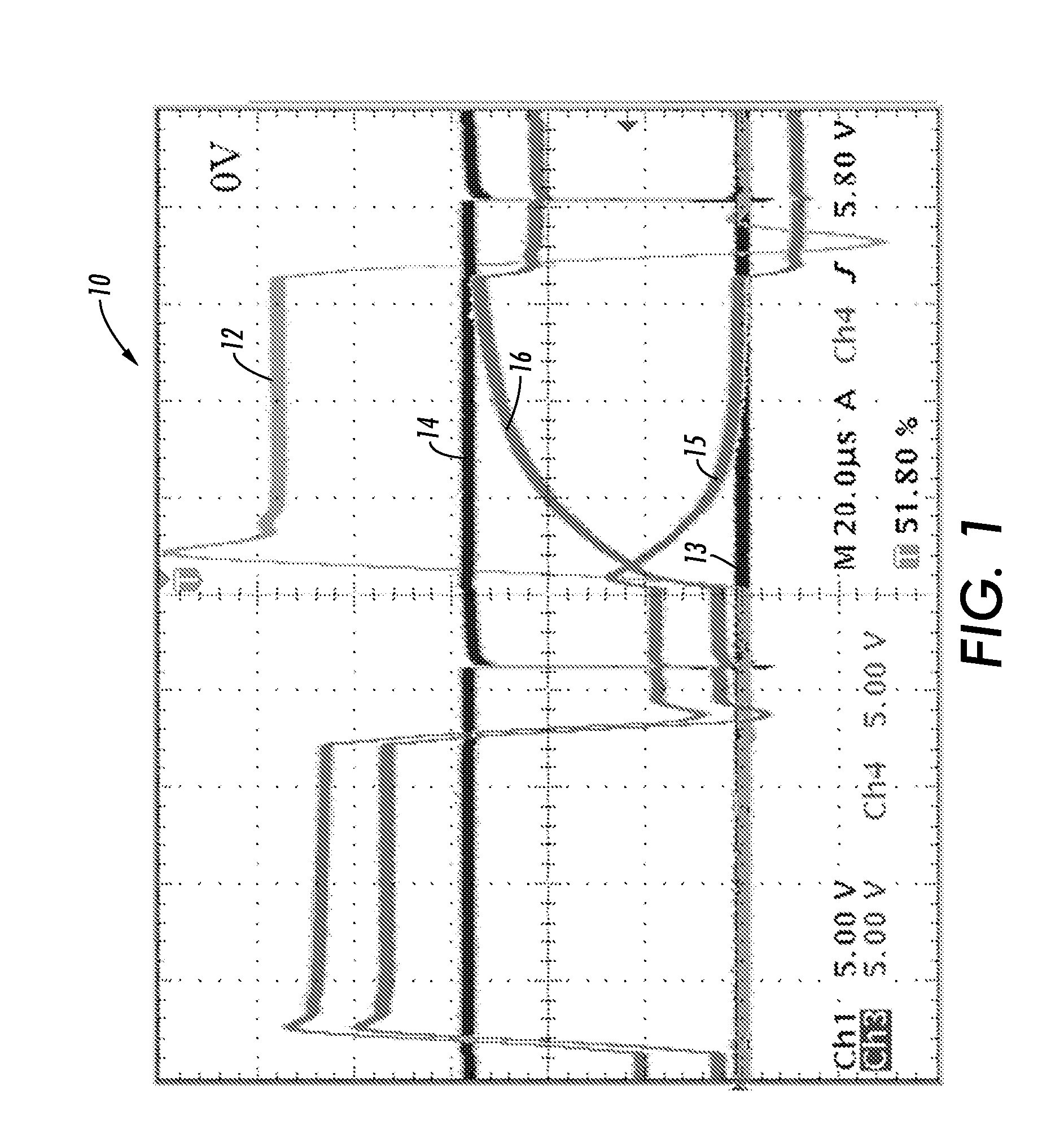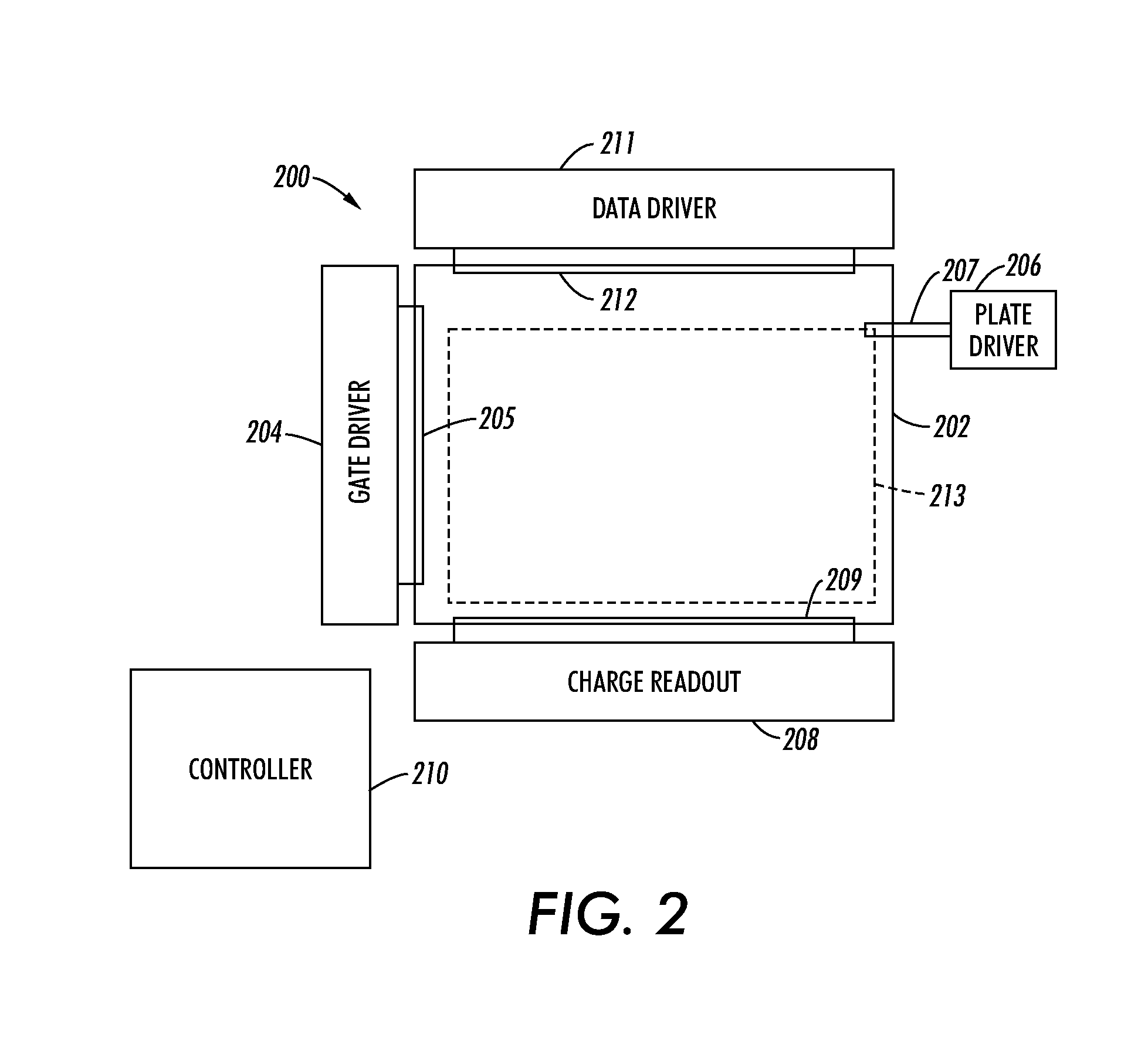Method and system for improved testing of transistor arrays
a transistor array and array technology, applied in the field of improved testing of transistor arrays, can solve the problems of difficulty in determining defects before applying display media or before the array is fully fabricated, implementation or impracticality of use, and/or impracticality,
- Summary
- Abstract
- Description
- Claims
- Application Information
AI Technical Summary
Benefits of technology
Problems solved by technology
Method used
Image
Examples
Embodiment Construction
[0056]The presently described embodiments provide a method and a system for testing active matrix arrays such as liquid crystal displays, focal-plane image sensors, light-emitting displays, and electric paper. The techniques according to the presently described embodiments allow for testing of each pixel or transistor of the active matrix before liquid crystals or other media are applied to the active matrix and before the production of the system is complete. This allows for an early detection testing system that is conducive to high production environments.
[0057]Charge sensitive amplifiers and selected voltage drivers (and other mechanisms) may be used (as injecting elements) in conjunction with variable timing and voltages to determine individual pixel or transistor properties over an entire array in just a few seconds. For example, a capacitive elastomer laminate (or plate) or gate lines of selected transistors may be used to inject charge into pixels or transistors. Connection ...
PUM
 Login to View More
Login to View More Abstract
Description
Claims
Application Information
 Login to View More
Login to View More - R&D
- Intellectual Property
- Life Sciences
- Materials
- Tech Scout
- Unparalleled Data Quality
- Higher Quality Content
- 60% Fewer Hallucinations
Browse by: Latest US Patents, China's latest patents, Technical Efficacy Thesaurus, Application Domain, Technology Topic, Popular Technical Reports.
© 2025 PatSnap. All rights reserved.Legal|Privacy policy|Modern Slavery Act Transparency Statement|Sitemap|About US| Contact US: help@patsnap.com



